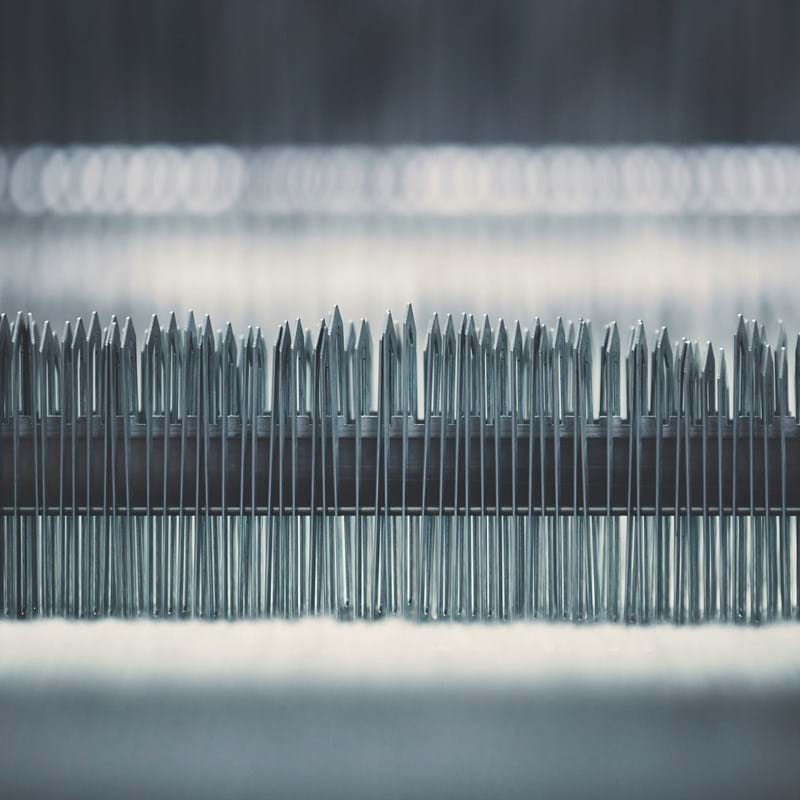In the same way as a sunscreen lets through, reflects and absorbs different proportions of light, a curtain does the same thing with sound. The more compact it is, the more the sound is reflected. The more permeable it is, the more sound gets through. So the challenge is to find solutions where friction occurs between the sound and the surface it hits. Because the more friction there is, the more sound is absorbed. The sound waves are converted to heat in the curtain and thereby do not exist any longer. A lot of people think that a thicker fabric is automatically better at absorbing sounds.
But this is not completely true.
How we test our curtains
Our acoustic curtains are tested according to the industry standard ISO 354: 2003. We thereby find out what sound absorption coefficients they have and what classes they belong to. The tests are carried out in the Müller-BBM sound lab in Munich. Each curtain is hung in a reverberation room and tested several times, both flat and folded, sometimes 15 cm from the wall but also at 10 cm from the wall, which is not actually required in order to be soundproof-classified. On each product page, there’s a detailed test report if you want to find out how each curtain performs in detail.


Basic training in sound
A few moments of reading matter about what sound is, how it occurs and how it behaves. For example, why do we hear the bass from the meeting room next door but not the voices?

Glossary
A little collection of the most important words from the world of sound. If you understand these, you can discuss sound, even with seasoned sound experts.

Acoustic textiles
The benefits of acoustic textiles, tips on how to use them, and reasons why good sound conditions are important.

Soundproof classification
Which soundproofing class does the textile belong to? And what does that actually mean?
In this section, we’ll explain how the ABC scale works.

Construction and testing
For the textile to be sound-absorbent, it needs friction between the sound waves and the textile. How well we manage to do this is tested by Müller-BBM in Munich.

Test the acoustic lab
If you want to experience the qualities of the textiles in person, you are very welcome at our function room. It’s right by the head office and the factory in Kinna.

Our soundproofing-classified textiles
The soundproofing-classified textiles from Svensson are designed for environments where design and function are crucial. The absorption classes range from A to E, where A is the best.

Acoustic simulation tool
We have a history of offering sound-absorbing textiles. To help you understand the value in technical interior textiles and not only provide the technical textiles, we now provide the technical knowledge and support to match it.